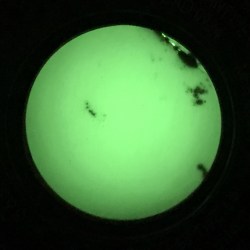[Nick Chen] shared some fascinating and useful details about building a AN/PVS-14 monocular night vision device from parts. It’s not cheap, but the build would be a simple one for most Hackaday readers, at least the ones who are residents of the USA. Since the PVS-14 is export controlled under the International Traffic in Arms Regulations (ITAR), parts are not sold outside of the US. Still, [Nick]’s illustrated build instructions provide a good look at what’s inside these rugged devices.
The build consists of purchasing a PVS-14 parts kit (or “housing kit”) which includes nearly everything except the image intensifier module, which must be purchased separately. Once all the parts are in hand, [Nick] explains how to assemble the pieces into a working unit.

Since the image intensifier is by far the most expensive component, there is an opportunity to save money by shopping for what [Nick] calls “blem” units. These units are functional, but have blemishes or dead spots within the field of view. The good news it that this makes them cheaper, and [Nick] points out that as long as the center region of the tube is clear, they are perfectly serviceable.
How much can one save by building from parts? [Nick] says buying a complete PVS-14 with a Gen 3 tube (sensitive to 450-950 nm) can cost between $2500 to $4000. It’s expensive equipment, no doubt, but deals can be found on the parts. Housing kits can be had for well under $1000, and [Nick] has purchased serviceable image intensifiers for between $500 and $1000. He says searching for “blem tubes” can help zero in on deals.
Knowing the right terms for searching is half the battle, and along with his build instructions (and a chunk of cash) a curious hacker would have all they need to make their own. Heck, build two because the PVS-14 is designed such that two units can be combined to make a binocular unit! Not ready to drop that kind of cash? Check out OpenScope, the open source digital night vision tool.












